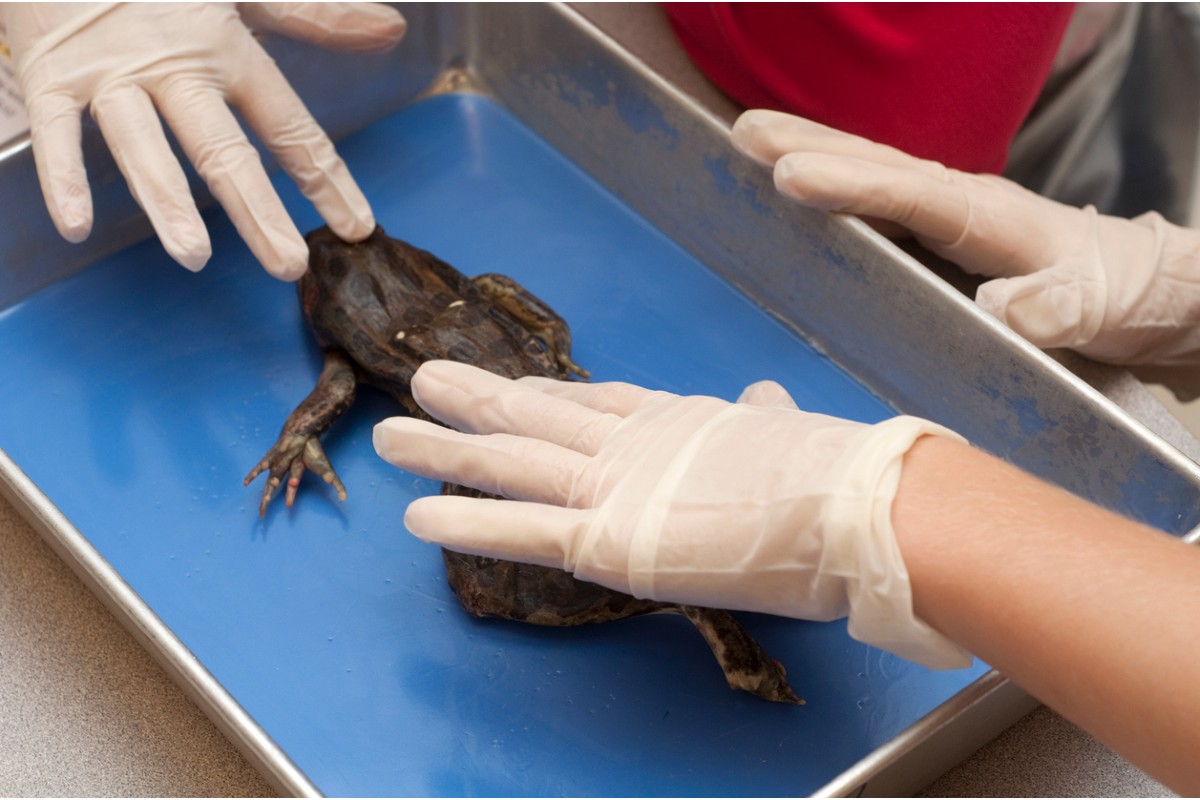
A frog dissection kit allows learners to explore the anatomy of a frog—from the convoluted digestive system to the heart with its three chambers, not to mention the reproductive organs. This hands-on experience plays a key role in comprehending the complex machinery of life, making them an indispensable resource for aspiring biologists, curious students, or even passionate hobbyists.
In this post, we’re taking a closer look at the best frog dissection kits of 2024, including our top pick—the National Geographic kit. Its glow-in-the-dark, synthetic specimen allows for multiple explorations while accurately representing the inner workings of a real frog.
The best frog dissection kits
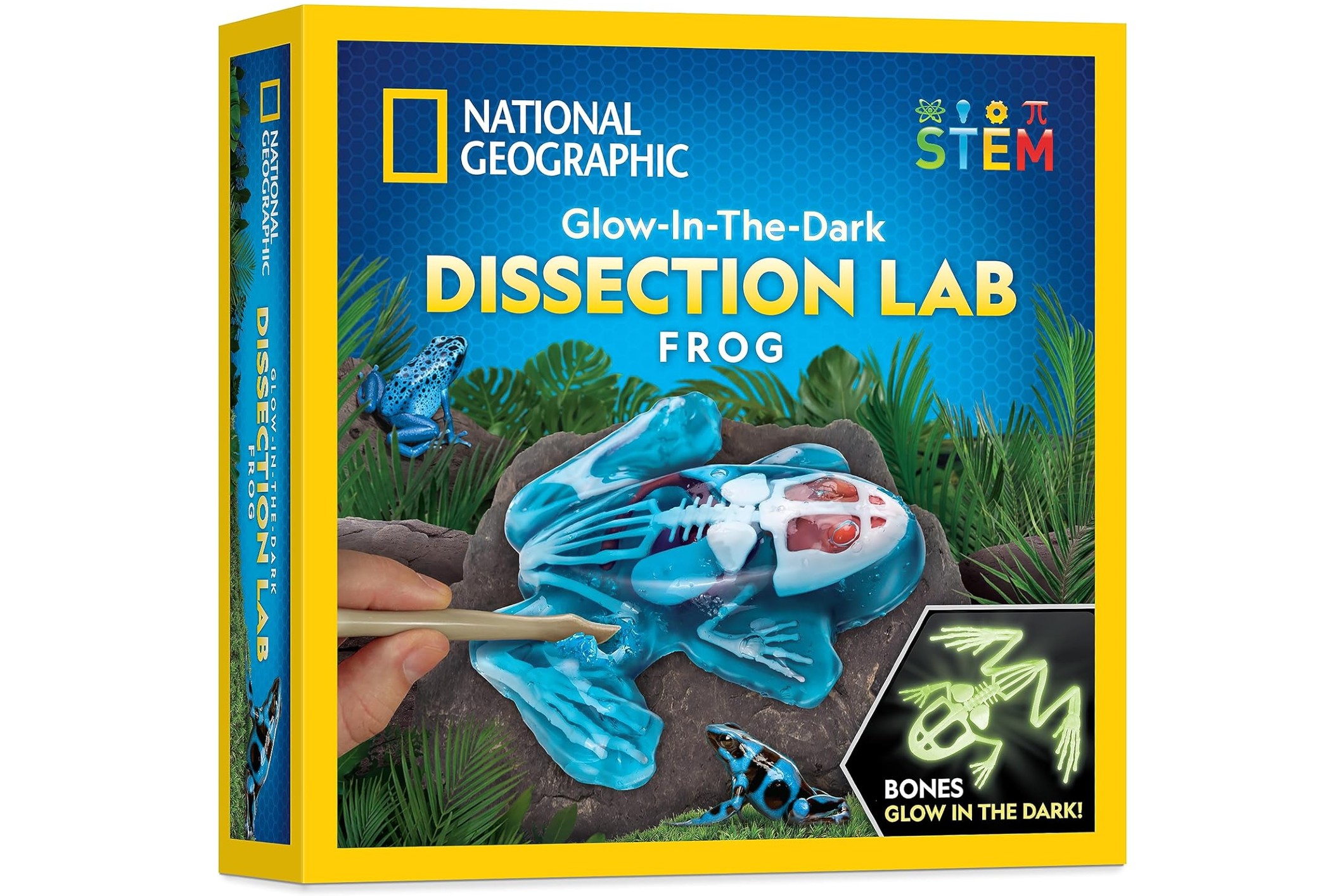
National Geographic Frog Dissection Kit – Best Overall
The National Geographic frog dissection kit leaps to the forefront as the best overall re-creatable anatomy kit. Its glow-in-the-dark synthetic frog, complete with glowing bones and realistic organs, makes learning interactive and illuminating. This science toy takes the traditional biology kit to a new level, providing a dynamic, hands-on educational experience that will engage both beginners and budding biologists alike.
This kit doesn’t just deliver on the fun aspect—it also equips young scientists with dissecting tools, skillfully nurturing their curiosity and encouraging their scientific explorations. It outshines other kits by allowing recreations of a real frog dissection, transforming learning from a static process into a dynamic action. Not only does it foster biological understanding, but it also ignites an appreciation for the intricacies of anatomy, making it our top overall pick.
Pros:
- Kit can be used multiple times
- Great introduction to science for kids
- Comes with realistic organs and tools
Cons:
- Anatomy is very basic
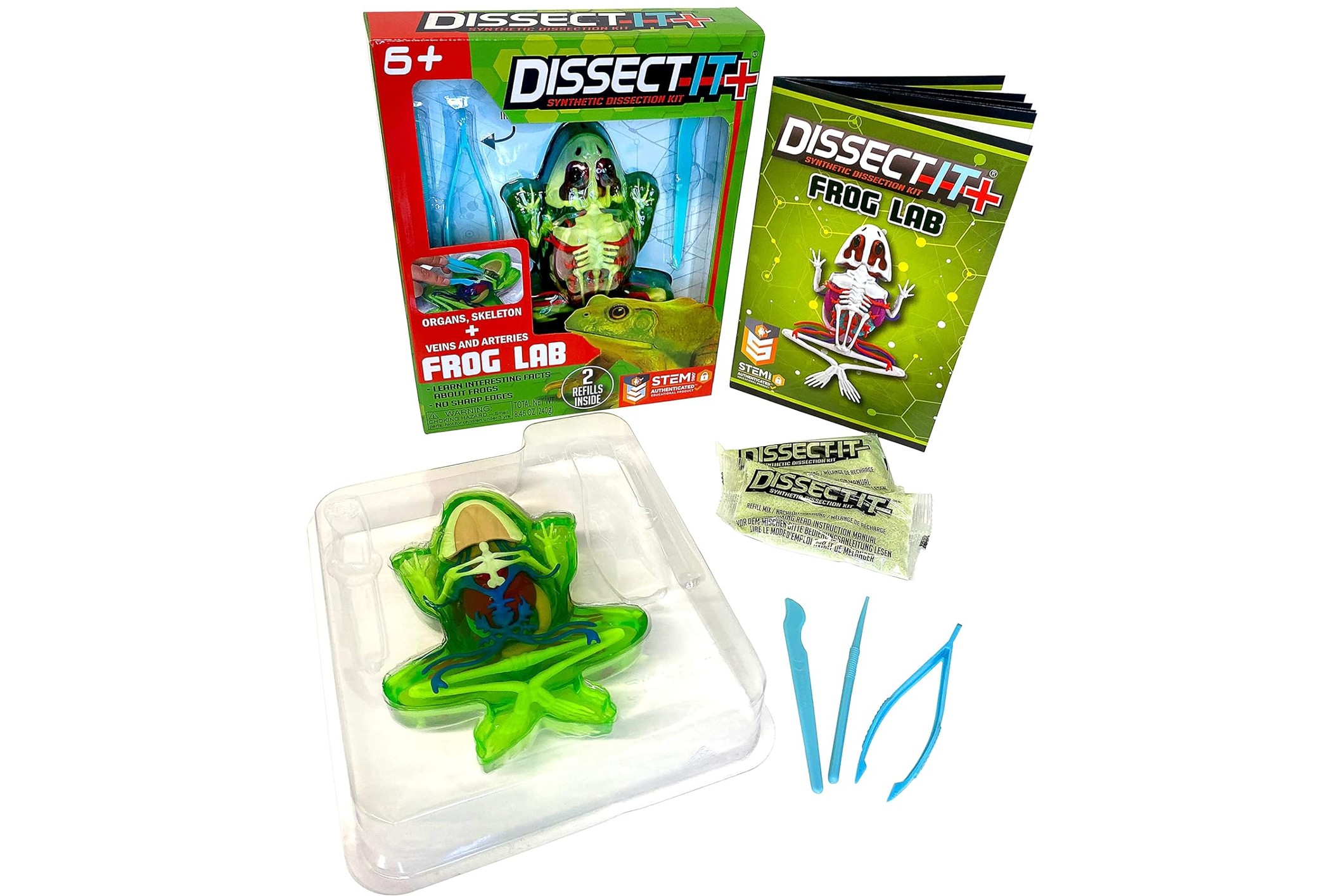
Dissect-It Plus Frog Dissection Kit – Best for Beginners
The Dissect-It frog dissection kit presents an engaging educational adventure for children. This kit brings to life a real-life lab experience, transforming a family’s kitchen table into a science lab. With no need for a real frog, the kit’s squishy gelatin mold makes for a mess-free introduction to dissection. Kids can dive into animal science and anatomy, learning at their own pace and in their own space.
This kit doesn’t just educate; it captivates. The realistic lab experience stimulates children’s interest in STEM, allowing them to explore their curiosity risk-free. It’s an excellent tool for home learning, sparking kids’ passion for biology.
Pros:
- Engaging and educational for kids
- Allows for multiple uses
- No mess and easy clean-up
Cons:
- Can be a bit messy
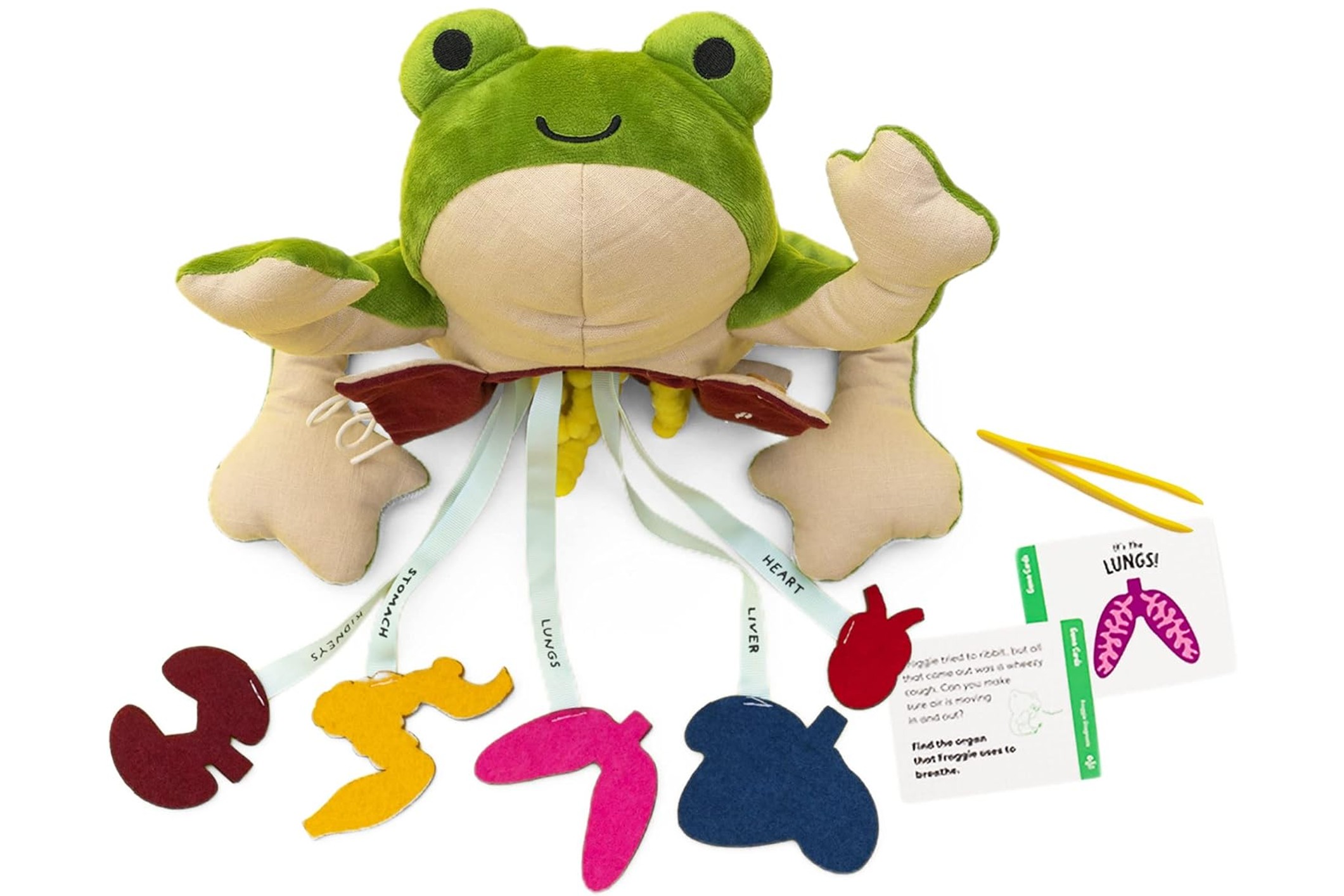
KiwiCo Froggie Lab Dissection Toy – Best for Younger Kids
Engage your child in a fun, educational experience with the KiwiCo Froggie lab dissection, a plush toy with a twist. This unique toy, suitable for kids aged 3 and up, invites children to delve into the anatomy of a frog, combining the comfort and familiarity of a stuffed animal with the intrigue of science. Much more than a regular plush toy, this kit transforms playtime into a learning adventure.
Designed to inspire curiosity, this product offers children a hands-on opportunity to explore science, making it a perfect gift for budding biologists or any child with a thirst for knowledge. Unlike traditional frog dissection kits, this frog dissection kit presents a friendly and approachable way to discover anatomy. It sparks fun and learning in an engaging way, effectively merging play and education.
Pros:
- High-quality educational toy
- Supports hands-on biology learning
- Encourages curiosity and questions
Cons:
- Not durable for rough handling
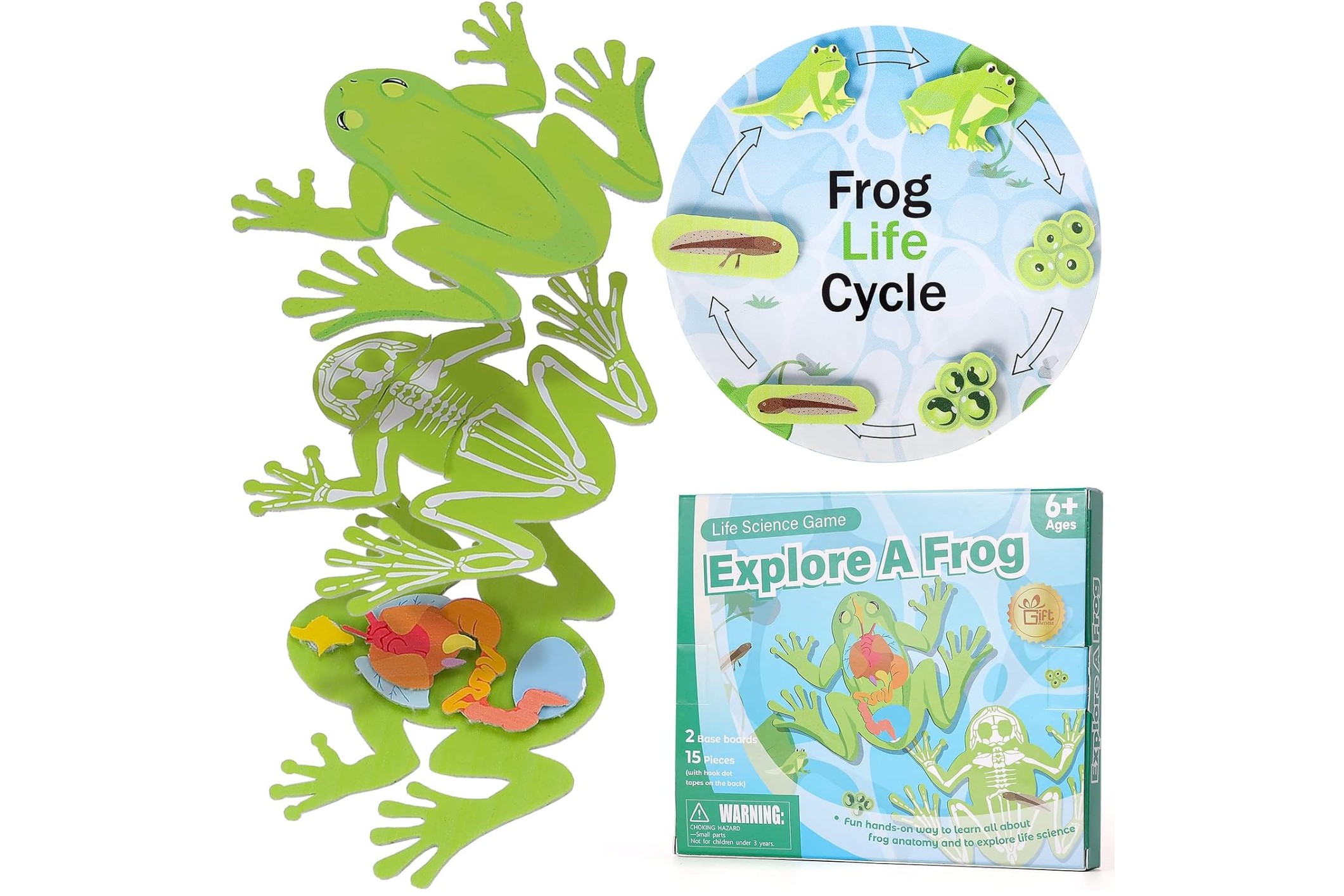
GiftAmaz Frog Anatomy Model Kit – Best for Cell Study
The GiftAmaz frog anatomy model dissection kit truly revolutionizes interactive learning. This soft felt frog science lab toy captures a child’s imagination while fostering a deeper understanding of biology and life science. It’s not just a toy—it’s a tool that brings STEM lessons to life, and it’s ideal for kids aged six years and older.
As a teaching aid, this dissection kit outperforms in cell study preparation. The kit effectively transforms the study of anatomy from a static textbook exercise into a dynamic, hands-on experience. It is an educational yet entertaining activity for classroom teaching or at-home learning. Sporting the duality of being a fun birthday toy and a valuable learning resource, it’s a gift that keeps on giving.
Pros:
- Perfect size for interactive boards
- Includes skeleton and life cycle pieces
- Comes with a storage sack for pieces
Cons:
- Difficult for young children to use alone

Frog dissection kits: a buying guide
Frog dissection, a staple in many science classrooms, is an interactive way to learn about the anatomy and physiology of amphibians. A proper frog dissection kit is vital to the experience by providing the necessary tools and resources. This guide will help you navigate the market to find the best frog dissection kit.
Quality of specimens
The first attribute to scrutinize is the quality of the specimens. High-quality specimens are essential to maximizing your dissection experience. These specimens should display clear anatomical structures free of damage or distortion. Look for kits that source their specimens from reliable suppliers and use humane preservation methods. A well-preserved specimen simplifies the dissection process, making it easier to identify important structures.
Variety of tools
An important aspect of any good frog dissection kit is the variety of tools it provides. At a minimum, the kit should include a scalpel, forceps, scissors, and a probe. Some kits might also provide a magnifying glass or a dissecting needle. These tools should be made of durable, easy-to-clean materials like stainless steel. The right tools make the dissection process smoother and more enriching.
Safety measures
Safety should never be an afterthought when dissecting. Top-notch frog dissection kits promote safety by including measures like latex gloves and safety goggles. Some kits even offer scalpel safety caps and disposable aprons. Remember, safety isn’t just about the gear. Look for kits that also offer safety guidelines and instructions to ensure a secure dissection experience.
Instructional material
A quality frog dissection kit should include comprehensive instructional material. This can be physical manuals or even digital resources. These should provide step-by-step guidance through the dissection process, labeling structures, and providing brief descriptions of their functions. Some kits offer additional resources, such as quizzes or flashcards, to reinforce learning.
Price
Lastly, consider the price of the frog dissection kit. While you shouldn’t compromise on quality, kits are available at various prices. High-end kits may include more tools, superior specimens, and comprehensive educational material. However, there are also budget-friendly options that offer decent quality for a lower price. Aim for a kit that delivers value for money.
Common questions about frog dissection kits
Q: What is included in a frog dissection kit?
A: A standard frog dissection kit typically includes a preserved frog specimen, dissection tray, dissection tools such as scissors, forceps, and a probe, and often an instructional guide or manual.
Q: How do I use the frog dissection kit?
A: To use the frog dissection kit, start by placing the frog in the dissection pan ventral side up. Use scissors to lift the abdominal muscles away from the body cavity. Cut along the midline of the body to the forelimbs. To learn more details and steps, you should refer to the instruction manual included with the kit.
Q: What safety precautions should I take when using a frog dissection kit?
A: Always wear safety goggles, gloves, and a lab apron when dissecting to protect your eyes, skin, and clothes from any chemicals used in preserving the frog. Handle all tools with care, as they can be sharp, and ensure you wash your hands thoroughly after the dissection.
Q: How do I maintain the frog dissection kit?
A: After each use, clean all the dissection tools with warm soapy water and dry them thoroughly to prevent rust. The dissection tray should also be cleaned and dried. If your kit comes with additional preserved specimens, keep them sealed in their packages until you’re ready to use them.
Q: What should I do if the frog specimen is damaged or deteriorated?
A: If the frog specimen is damaged or deteriorated, it may not be safe or educative to dissect. In this case, it’s recommended to contact the supplier or manufacturer for a replacement.
Q: Are frog dissection kits appropriate for all ages?
A: Frog dissection kits are generally recommended for older kids and teens with a strong interest in biology. They are often used in middle school and high school biology classes. It’s always important to ensure that a responsible adult supervises the dissection to maintain safety.
Q: What should I do if the dissection tools become blunt or damaged?
A: If the dissection tools become blunt or damaged, it’s important to replace them. Using damaged or blunt tools can make the dissection process more difficult and potentially dangerous.
Q: Is it necessary to have prior knowledge before using a frog dissection kit?
A: While it’s beneficial to have some basic knowledge of frog anatomy, most kits come with detailed instructions and guides. However, the dissection process requires patience, precision, and respect for the specimen, so it’s a good idea to have a teacher or experienced adult on hand if it’s your first dissection.


